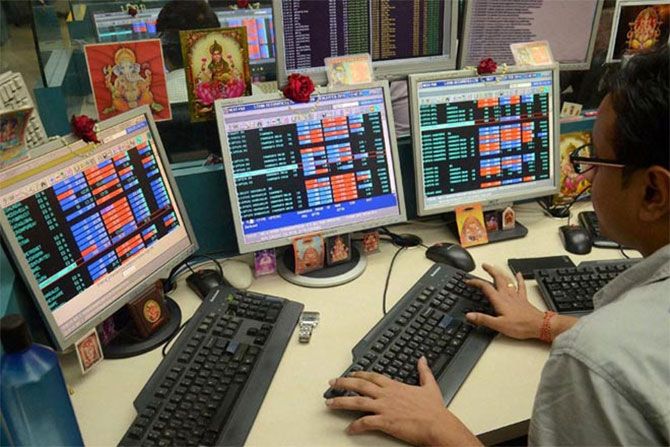 | « Back to article | Print this article |
The bond market expects at least 25 basis points cut in the June 6 policy.

Since the beginning of May, 10-year bond yields have fallen 28 basis points, as investors factor in sharp rate cuts by the Reserve Bank of India (RBI) after the ruling BJP’s resounding victory at the polls.
Most of the movement in yields have come after the exit poll results, as foreign portfolio investors also increased their investments in Indian bonds.
The 10-year bond yields closed at 7.13 per cent, two basis points lower than the previous close, but considering that the yields were at 7.41 per cent at the end of April, the movement is pretty sharp.
The bond market expects at least 25 basis points cut in the June 6 policy, but it is divided on if the stance would be changed to accommodative.
While most economists expect a cut, some are advocating a pause in the policy.
“The bond market has baked in a rate cut of 25 basis points, if the stance also changes with that, there will be a movement of another five basis points.
"If there is no rate cut though, there will be a chaos,” said Harihar Krishnamurthy, head of treasury at First Rand Bank.
Devendra Dash, head of risk at AU Small Finance Bank, said if the yields climb up on no rate cut, it will soon start falling as the market is pretty convinced that sooner or later there will be rate cuts.
Bonds from big corporates are also showing some signs of easing, at least in the shorter tenure.
The corporate bonds had remained elevated even when government bond yields were falling.
After the election results, though, some of the corporate bond yields have fallen 15-20 basis points, following the fall in rates by government bonds.
As yields fall, prices of bonds rise.
State Bank of India’s chief economic advisor Soumyakanti Ghosh expects the six-member monetary policy committee to cut rates by 50 basis points in the June policy, but Goldman Sachs’ Prachi Mishra and Andrew Tilton sees rates to remain stable in June as the RBI waits for past rate cuts to be passed by banks to the customers first.
Whatever be the expectations, there are solid reasons why the bond yields are falling in India.
Globally, yields have softened, led by an inversion in US yield curve.
The US 10-year yields have fallen below the three-month yield and overall, the yields have fallen 5-6 basis points across the curve.
This gives rise to the fear that the growth prospects of the world’s largest economy may not be as robust as was expected before.
US-China trade tensions are dragging global growth, which is reflected in the softer oil prices.
Despite Iran sanctions, oil prices are trading at $68 a barrel, from $74 earlier this year.
At the same time, a significant section in the market is expecting the gross domestic product (GDP) numbers for the last quarter to come at below 6 per cent.
That may drag the annual GDP growth rate to just about 7 per cent, or even below that.
The RBI in that case will have to chip in with rate cuts, said bond dealers.
The landslide victory of the NDA government has attracted foreign investors, looking for an avenue to invest.
In May so far, FPIs have bought Rs 1,040 crore in Indian debt.
Krishnamurthy, the system liquidity deficit being at Rs 25,000 crore, from nearly Rs 60,000-70,000 crore a month ago, and the RBI’s indication to provide enough liquidity in the system through open market operations has buoyed the bond market sentiment.
“The government is expected to front-load its spending, and that would create additional liquidity, which is positive for bonds,” said Krishnamurthy.
However, it is highly unlikely that the 10-year yields can fall below 7 per cent, considering the heavy supply of government bonds, according to bond dealers.
Photograph: Danish Siddiqui/Reuters